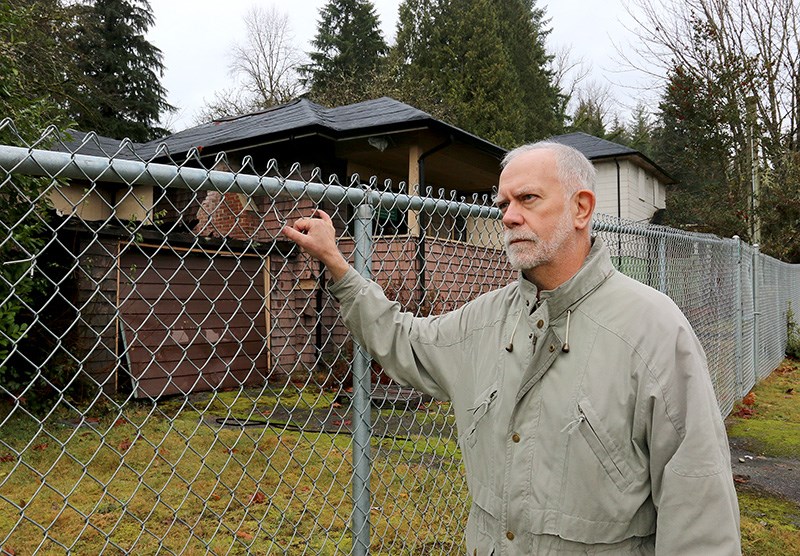A volunteer group passionate about preserving Port Moody’s history is worried the future of the old Ioco townsite is being lost in the tussle over the amount of density that can be built on the Ioco lands surrounding it.
Robert Simons, a past president of the Port Moody Heritage Society, said the issue of preserving and restoring the 23-acre townsite that used to be home for workers at the nearby Imperial Oil refinery needs to be brought to the forefront again.
He said in the 17 years since the site was protected by the city as a heritage conservation area, not enough actual conservation has been accomplished. In fact, one building was lost to a fire in 2003 while another two have deteriorated so much they’re likely beyond repair.
And the longer the remaining wood-frame houses, grocery store and community hall are left to the elements, the more expensive it will become to bring them back.
Gilic Global Development Management Inc., formerly known at Brilliant Circle Group, purchased the 253-acre Ioco lands that include part of the townsite — another part is still owned by Imperial Oil — in 2015 with an agreement to maintain the remaining buildings for the possible creation of a cluster of the heritage structures at the heart of a new urban mixed-use neighbourhood. At the time, the developer even suggested it could restore the townsite’s old lawn bowling green and add a new clubhouse.
A report by cultural and heritage consultants Donald Luxton & Associates that was commissioned by the city provided a road map to the townsite’s preservation and restoration.
Simons said some of the report’s recommendations have been implemented at Gilic’s expense, like putting up new gutters, protecting roofs and running electricity into the remaining homes so they can be heated as well as securing the buildings with high chainlink fencing. Other commitments, like the restoration of the Tremaine residence into a community meeting space, have languished as the fate of the property is debated.
Simons said these are “unplanned consequences” of the city’s move to limit the Ioco lands to its current zoning for single-family homes.
“Infill development would provide the funding to make [preservation] happen,” Simons said.
But Port Moody Mayor Rob Vagramov said the city remains committed to protecting the Ioco townsite.
“Preserving our past is important, as is anticipating and preparing for the future,” he said, adding the city will be reviewing structures on the townsite to ensure Gilic is living up to its commitment to maintain them.
Simons said that’s not enough. He envisions the restoration of the old buildings could become an attraction for the city, not unlike Steveston or Fort Langley. But that won’t happen until the city deems it a priority and it makes financial sense for the owner of the property.
“Somebody has to be a facilitator,” he said.
Mary Anne Cooper, a Port Moody centenarian who has been fighting to preserve the Ioco townsite for decades, said the lack of progress on saving the structures is frustrating.
“The lack of planning, passage of time, deterioration, vandalism [and] loss of values have raised the question how to protect this valued asset,” she said.
At the Port Moody council meeting Dec. 3, Coun. Meghan Lahti suggested the city could be proactive by acquiring the townsite itself.
But Vagramov said that’s unlikely to happen. He said the city has other priorities, such as affordable housing, park acquisition and keeping the lid on tax increases.
Simons said something has to give or else an important part of Port Moody’s history could be lost.
“We all have an interest in preserving history, not only for ourselves, but for future generations.”


